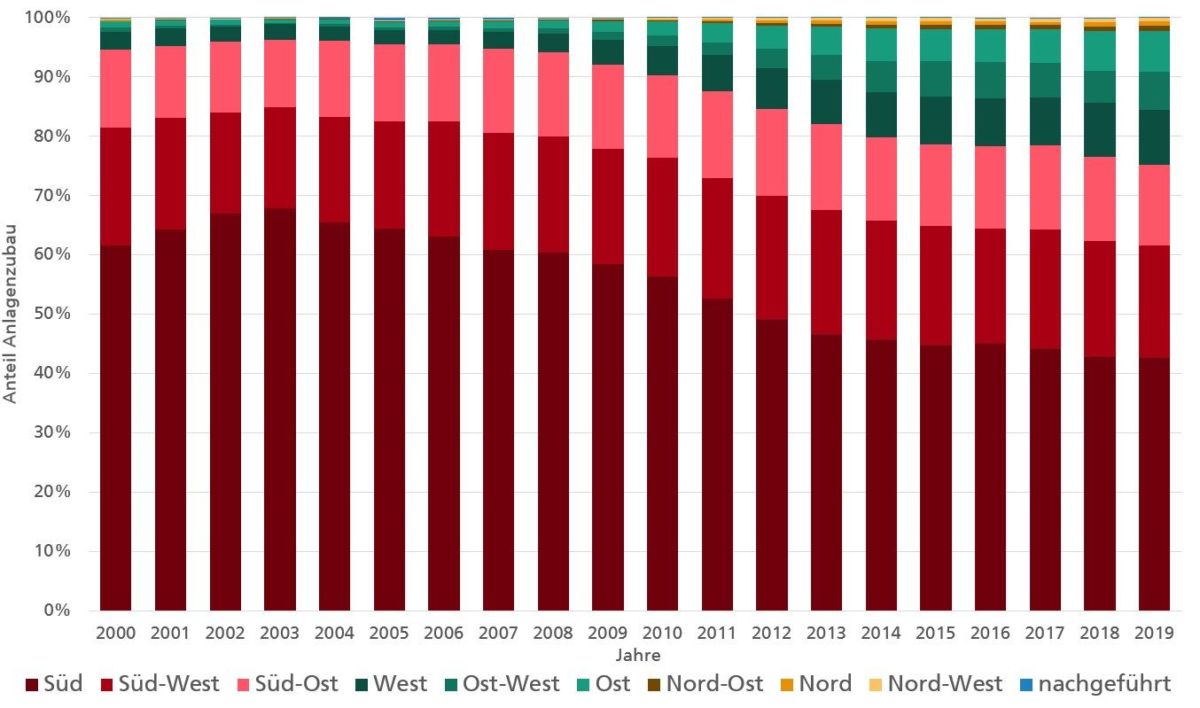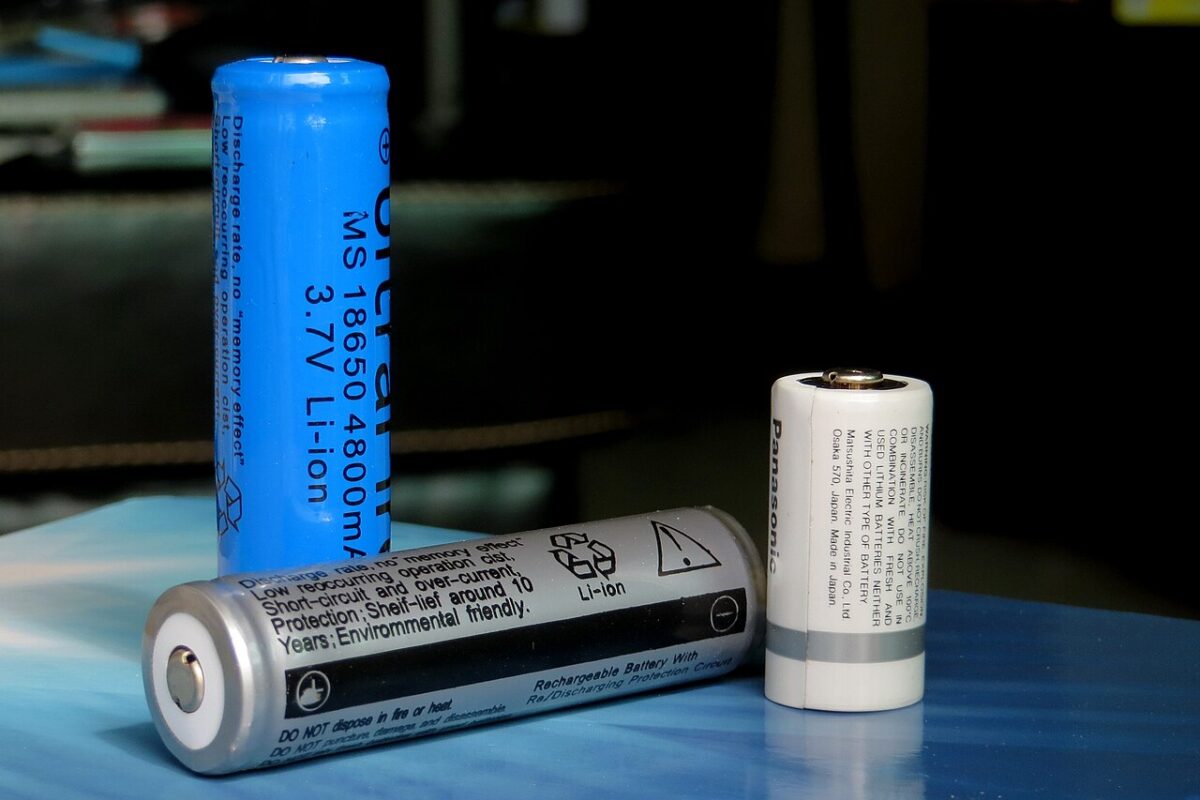The Fraunhofer Institute for Solar Energy Systems ISE has reported that an increasing number of solar PV rooftop systems installed in Germany in recent years have an east or east/west orientation, or a smaller tilted angle.
In a report, the institute's experts analyzed the trajectory of all PV system typologies deployed in the country over the past two decades. “The share of PV systems with southern orientation decreased from 61% in 2000 to 42% in 2019,” they found. “East orientations increased from 1% in 2000 to 7% in 2019, west orientations from 3% in 2000 to 9% in 2019, and east/west orientations from 1% in 2000 to 6% in 2019.”
According to the study, the share of south-oriented PV systems in 2019 reached 42%, while south-west systems and south-east systems had a share of 19% and 14%, respectively. Furthermore, it revealed west-oriented systems represent 9% of the total and east-oriented 7%, with east-west systems representing the smallest share, at 6%.
The researchers warned that installing solar arrays with orientations other than south may result in power yield losses, the extent of which depends mainly on the inclination angle of the solar modules. “If the tilted angle is optimal, the loss of power can be minimized and is typically between 5-10%,” they said, noting that orientations other than south can help better distribute electricity generation during the day.
The survey further revealed that the share of PV rooftop installations that have a tilted angle lower than 20 degrees has increased from 5% in 2000 to 24% in 2019. “Plants with tilt angles between 20 and 40 degrees accounted for an average share of 63% between 2000 and 2009,” the researchers added. “This share fell to 54% between 2010 and 2019.”
Moreover, they explained that the number of PV systems with a limit to a maximum grid feed-in of 70% of their output power has considerably increased in recent years. This limitation is established by the country's renewable energy law, the so-called EGG, for PV systems that have no remote-controllable feed-in management. “Since 2014, this proportion has grown by an average of 4 percentage points per year,” the report noted. “The remaining plants with output limitations are bound by even higher limitations ranging from 60% to 50% due to the combined battery storage system.”
This content is protected by copyright and may not be reused. If you want to cooperate with us and would like to reuse some of our content, please contact: editors@pv-magazine.com.




In our country Ethiopia, the technology of Solar power is yet not applicable because of, Human power, cost and absence of fabricated automation generally because of poverty. do you give training on solar power? if so, I wish to receive training and thereby applying solar rooftops in our country. contact me via my e-mail below
Thank you